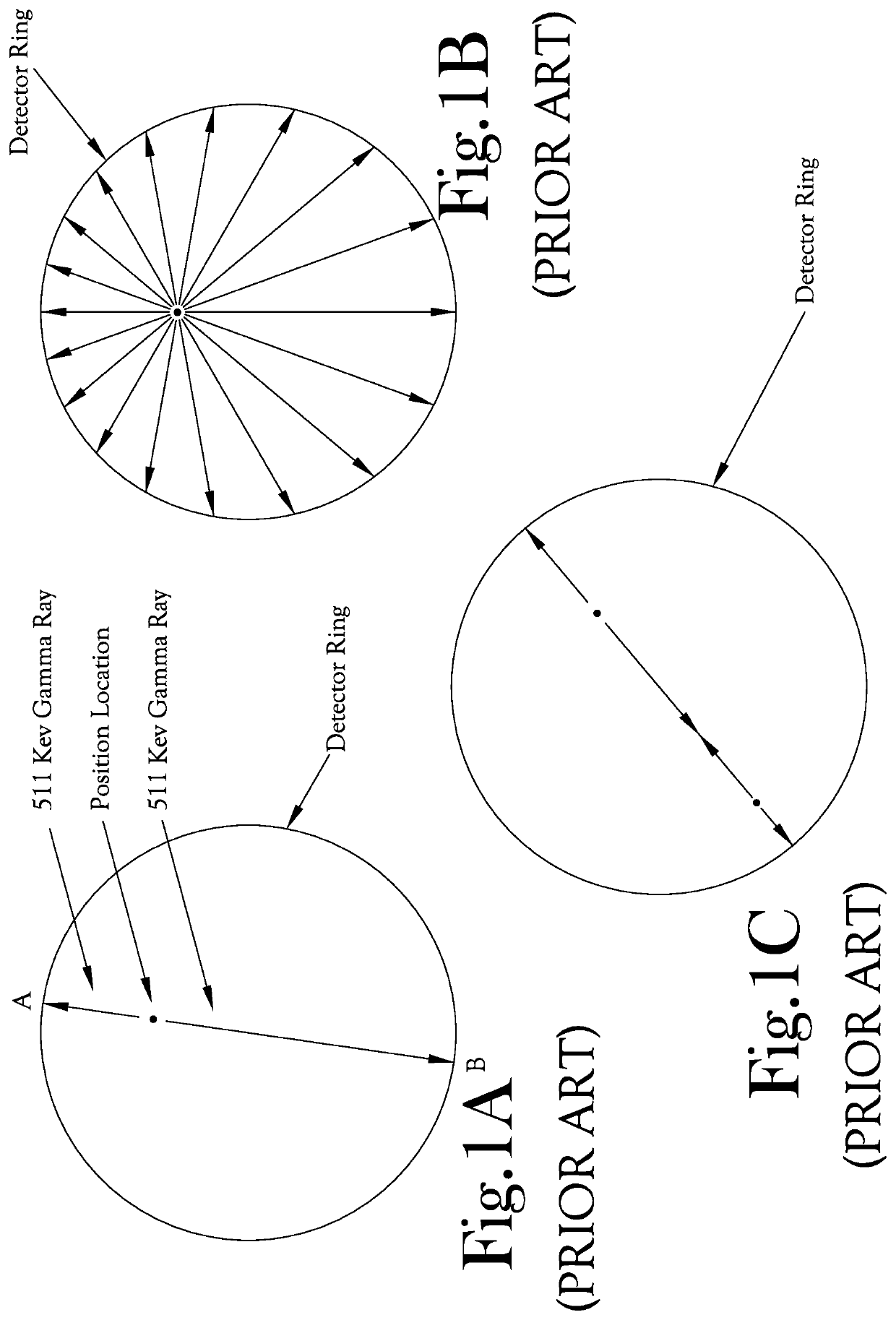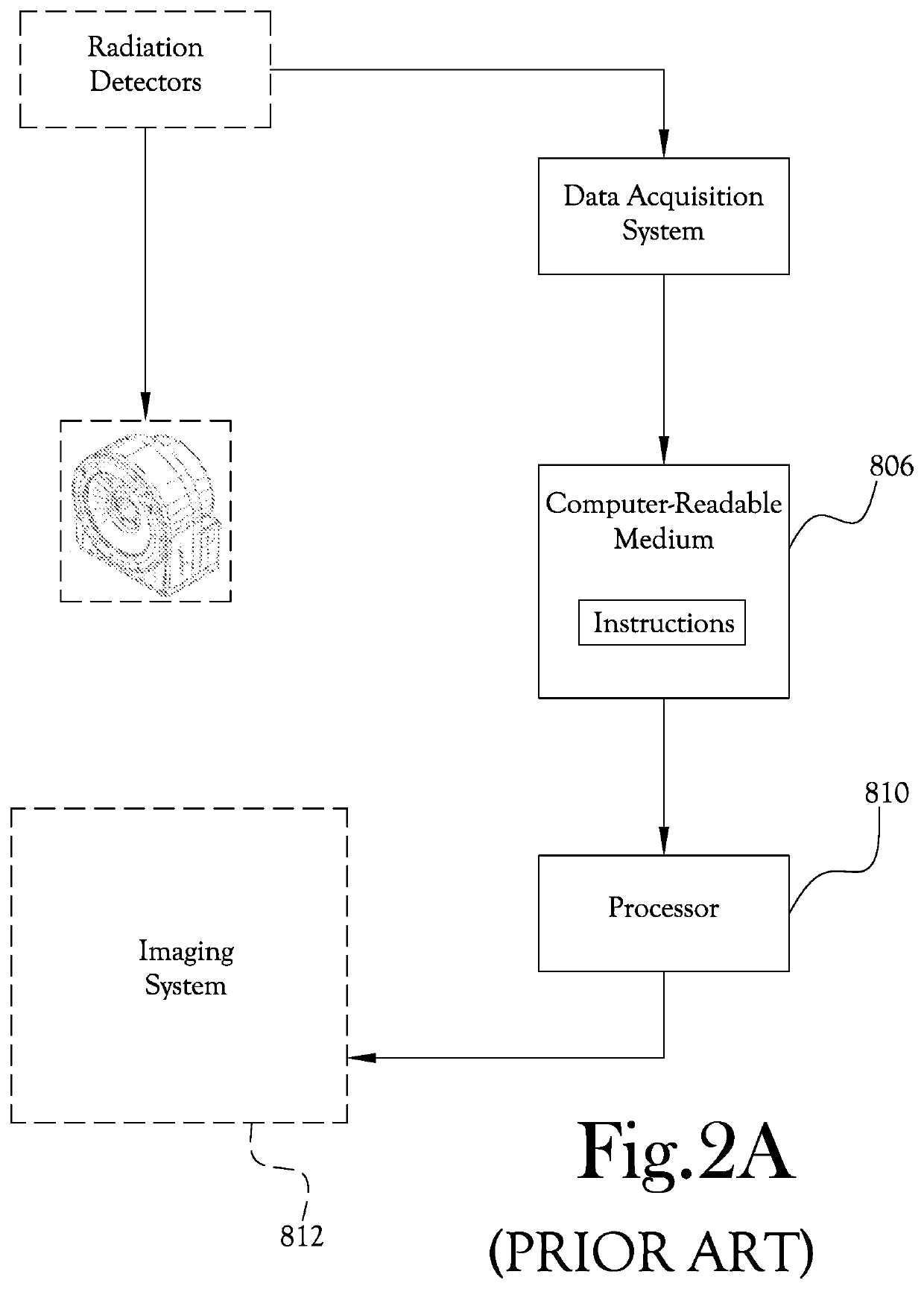Time-resolved positron emission tomography encoder system for producing real-time, high resolution, three dimensional positron emission tomographic image without the necessity of performing image reconstruction
a tomographic encoder and encoder technology, applied in tomography, x/gamma/cosmic radiation measurement, instruments, etc., can solve the problems of inability to propose or develop, complicated process of finding the intersection of lors and identifying the exact location of positrons, and limited timing resolution of scintillator based optical detection systems. achieve the effect of more efficient and economical production
- Summary
- Abstract
- Description
- Claims
- Application Information
AI Technical Summary
Benefits of technology
Problems solved by technology
Method used
Image
Examples
Embodiment Construction
[0035]A new Time-Resolved Positron Emission Tomography, TPET, system 10 capable of providing real-time, high resolution, three-dimensional imagery is illustrated in FIGS. 5, 6A, 6B, 7A, and 7B. It will be understood that in state-of-the-art PET imagery, the normal LOR 20 is determined by standard block detectors 30A and 30B, which, as will be understood, are diametrically opposed to one another, and measure the gamma ray position, in both the X and Y coordinates, 40 and 50 respectively, in two dimensional space as schematically illustrated in FIG. 7A. FIG. 5 depicts a TPET imaging system of the present general inventive concept. FIG. 5 represents the TPET imaging system showing the required two parallel plates of detectors, 30A and 30B, having typically a factor of ten fewer detectors than the prior art.
[0036]In FIGS. 7A and 7B, the positron events, such as positron event 75 in FIG. 7A, that is occurring in the organ 70, is illustrated schematically. Referring to FIGS. 7A and 7B, th...
PUM
 Login to View More
Login to View More Abstract
Description
Claims
Application Information
 Login to View More
Login to View More - R&D
- Intellectual Property
- Life Sciences
- Materials
- Tech Scout
- Unparalleled Data Quality
- Higher Quality Content
- 60% Fewer Hallucinations
Browse by: Latest US Patents, China's latest patents, Technical Efficacy Thesaurus, Application Domain, Technology Topic, Popular Technical Reports.
© 2025 PatSnap. All rights reserved.Legal|Privacy policy|Modern Slavery Act Transparency Statement|Sitemap|About US| Contact US: help@patsnap.com



